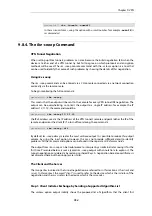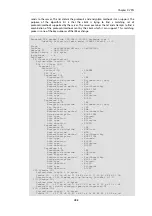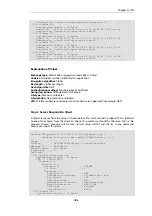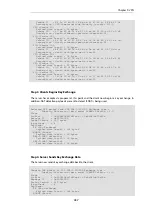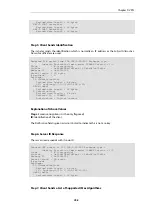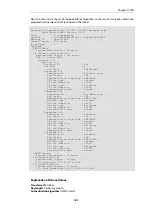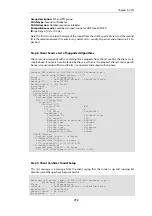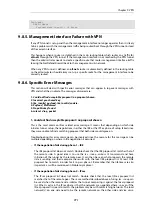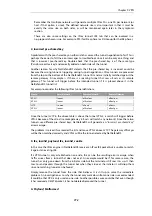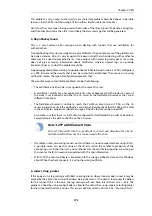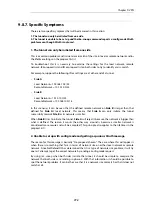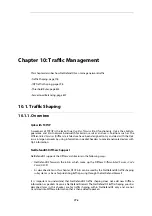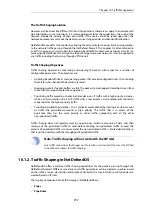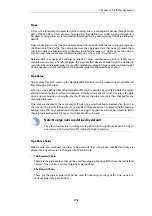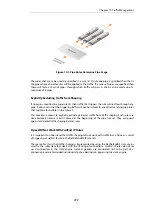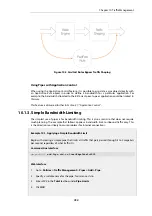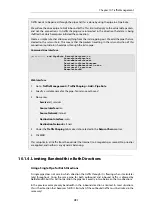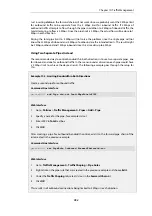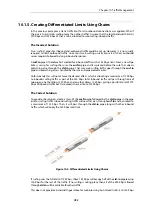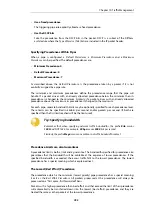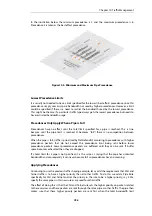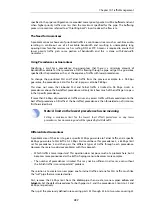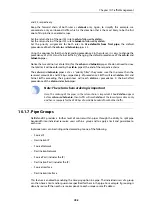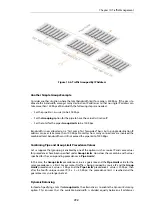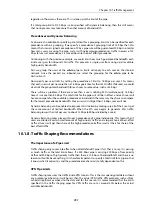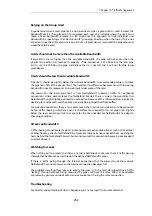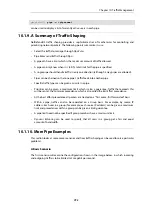
Pipes
A
Pipe
is the fundamental object for traffic shaping and is a conceptual channel through which
data traffic can flow. It has various characteristics that define how traffic passing through it is
handled. As many pipes as are required can be defined by the administrator. None are defined by
default.
Pipes are simplistic in that they do not care about the types of traffic that pass through them nor
the direction of that traffic. They simply measure the aggregate data that passes through them
and then apply the administrator configured limits for the pipe as a whole or for
Precedences
and/or
Groups
(these concepts are explained later in
).
NetDefendOS is capable of handling hundreds of pipes simultaneously, but in reality most
scenarios require only a handful of pipes. It is possible that dozens of pipes might be needed in
scenarios where individual pipes are used for individual protocols. Large numbers of pipes might
also be needed in an ISP scenario where individual pipes are allocated to each client.
Pipe Rules
One or more
Pipe Rules
make up the NetDefendOS
Pipe Rule set
which determine what traffic will
flow through which pipes.
Each pipe rule is defined like other NetDefendOS security policies: by specifying both the source
and destination for the interface and network, as well as the service to which the rule is to apply.
Once a new connection is permitted by the IP rule set, the pipe rule set is then checked for any
matching pipe rules.
Pipe rules are checked in the same way as IP rules, by going from top to bottom (first to last) in
the rule set. The first matching rule, if any, decides if the connection is subject to traffic shaping.
Keep in mind that any connection that does not trigger a pipe rule will not be subject to traffic
shaping and could potentially use as much bandwidth as it wants.
Note: No pipe rules are defined by default
The rule set for pipe rules is initially empty with no rules being defined by default. At least
one rule must be created for traffic shaping to begin to function.
Pipe Rule Chains
When a pipe rule is defined, the pipes to be used with that rule are also specified and they are
placed into one of two lists in the pipe rule. These lists are:
•
The Forward Chain
These are the pipe or pipes that will be used for outgoing (leaving) traffic from the NetDefend
Firewall. One, none or a series of pipes may be specified.
•
The Return Chain
These are the pipe or pipes that will be used for incoming (arriving) traffic. One, none or a
series of pipes may be specified.
Chapter 10: Traffic Management
778
Summary of Contents for NetDefendOS
Page 30: ...Figure 1 3 Packet Flow Schematic Part III Chapter 1 NetDefendOS Overview 30 ...
Page 32: ...Chapter 1 NetDefendOS Overview 32 ...
Page 144: ...Chapter 2 Management and Maintenance 144 ...
Page 284: ...Chapter 3 Fundamentals 284 ...
Page 392: ...Chapter 4 Routing 392 ...
Page 419: ... Host 2001 DB8 1 MAC 00 90 12 13 14 15 5 Click OK Chapter 5 DHCP Services 419 ...
Page 420: ...Chapter 5 DHCP Services 420 ...
Page 573: ...Chapter 6 Security Mechanisms 573 ...
Page 607: ...Chapter 7 Address Translation 607 ...
Page 666: ...Chapter 8 User Authentication 666 ...
Page 775: ...Chapter 9 VPN 775 ...
Page 819: ...Chapter 10 Traffic Management 819 ...
Page 842: ...Chapter 11 High Availability 842 ...
Page 866: ...Default Enabled Chapter 13 Advanced Settings 866 ...
Page 879: ...Chapter 13 Advanced Settings 879 ...

